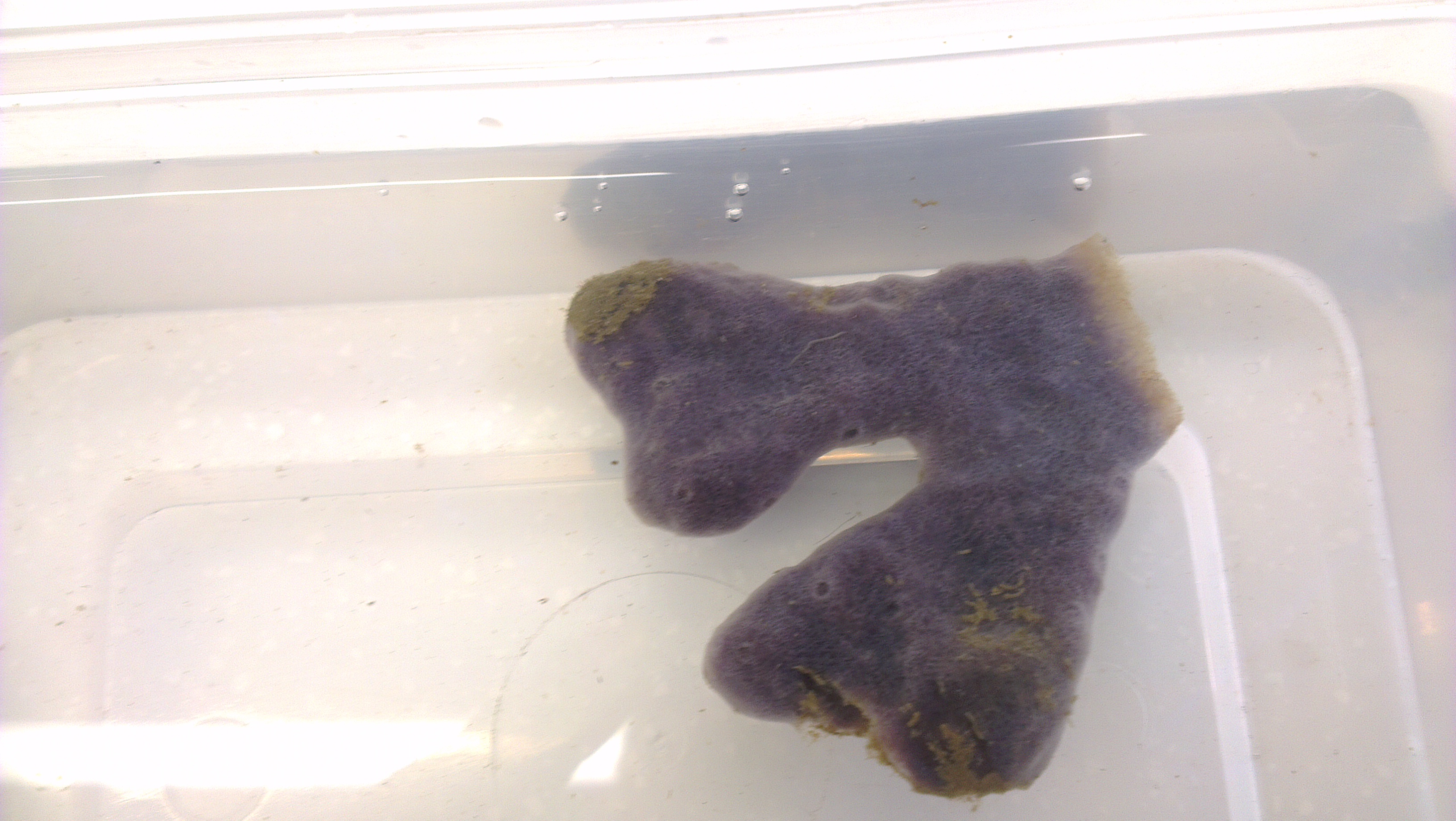Summary
Physical Description
Ecology
Life History & Behaviour
Reproduction
Feeding and Respiration
Anatomy & Physiology
Body Structure
Cell Structure
Cell Types
Independent Project (Spicule Structure)
Evolution & Systematics
Evolution
Phylogeny
Biogeographic Distribution
Conservation & Threats
References & Links |
Summary
Porifer are one of the oldest phylums known and are considered one of the major step between unicellular and multi-cellular organisms (Rupert et al 2009). Within the Phylum Porifera exist the Demospongiae, collagen & silicon bodied organism that make up a major part of marine ecosystems.
Niphates sp. (shown below) was an extremely difficult sponge to identify despite its simple appearance. The species , a syconoidal Dermosponge , was collected from Moreton Bay in south-east Queensland. The difficult with identifying this species lay in the make up of its "skeletal" system. The Sponge despite , possessing the collagen based matrics held together with silicon spicules also contained several other spicules types characteristic of Calcarean and Homosclaramorpha.
Further independent research (Project) went into this issue to help explain and finally identify this surprising species.
The following webpage is aimed to not only help identify this species of sponge but many other as well, within the Genus Niphates that may be confused for other taxons due to their misleading biology.

|
|